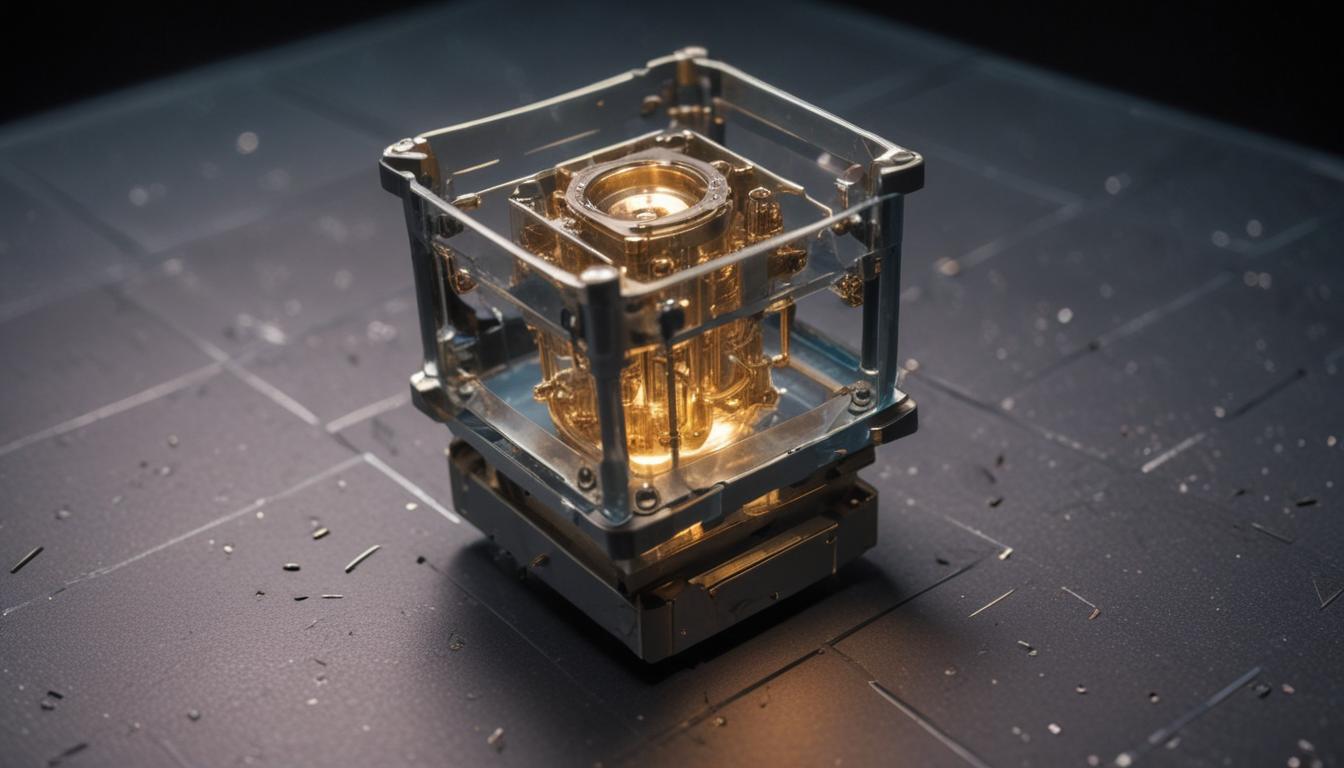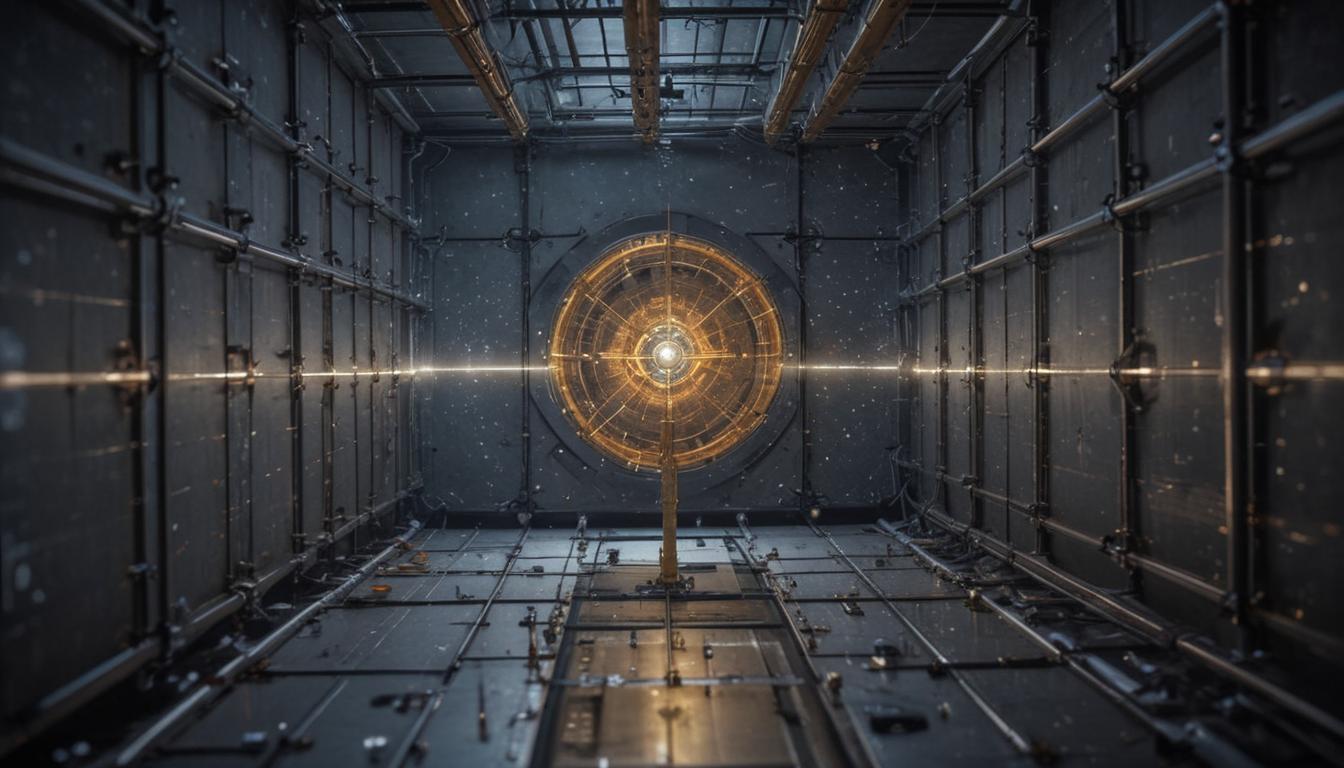Now Reading: Quantum Sensors Seeing the Invisible
- 01
Quantum Sensors Seeing the Invisible
Quantum Sensors Seeing the Invisible

Quantum Sensors Measuring the Unmeasurable
Have you ever wondered what lies beyond the limits of our best technology? We can pinpoint a location with GPS, see distant galaxies with telescopes, and analyze materials at a microscopic level. Yet, we still hit a wall when it comes to the most subtle signals in our universe. Trying to see the faint magnetic whisper of a human thought, navigate deep underwater without a satellite signal, or detect a hidden chamber beneath the earth has remained stubbornly difficult. This is the frustrating frontier of measurement, where signals are so faint they are drowned out by the noise of the world.
But what if we could turn the very laws of physics into our ultimate measurement tool? Imagine a technology so sensitive it can detect the gravitational pull of a single person or the magnetic field produced by a single neuron firing in the brain. This is not science fiction. This is the promise of quantum sensors, a revolutionary technology that harnesses the strange and powerful rules of the quantum realm. They are the solution to measuring the unmeasurable, opening doors to discoveries and capabilities that were previously locked away.
What Exactly Is a Quantum Sensor
A classical sensor, like the thermometer in your home, works by averaging the behavior of billions of particles. It’s effective, but it’s also a blunt instrument. A quantum sensor, on the other hand, is a device of exquisite precision. It uses a single, controlled quantum system—such as a single atom, an electron, or a particle of light—as its detector. By isolating and manipulating this particle, scientists can use its delicate quantum state to measure a physical quantity with breathtaking accuracy.
The magic of a quantum sensor lies in its engineered fragility. In the world of quantum computing, environmental disturbances are a major problem. But in quantum sensing, this “problem” becomes the core feature. These sensors are designed so that their quantum states are incredibly sensitive to the slightest external influence, whether it’s a tiny change in a magnetic field or a subtle gravitational shift. This hyper-sensitivity allows them to pick up signals that would be completely invisible to any classical device.
Harnessing Quantum Weirdness How These Sensors Work
To understand how a quantum sensor works, think of a perfectly balanced spinning top. If you place it in a completely still room, it will spin flawlessly. But if even the slightest breeze blows, the top will begin to wobble. By measuring the wobble, you could calculate the exact strength of that tiny breeze. A quantum sensor operates on a similar principle, but its “spinning top” is the quantum state of a particle, often held in a state of superposition where it exists in multiple states at once.
Scientists first prepare a quantum system, like a cloud of super-cooled atoms, into a precise, known state. Then, they allow this system to interact with the environment. An external force, like the gravitational field of a nearby object, will “wobble” the quantum states of the atoms in a predictable way. Finally, a laser is used to measure how much the state has changed. This tiny change reveals an immense amount of information about the force that caused it, enabling a level of precision that was once thought to be a theoretical limit.

From Brain Scans to Navigation The Real World Impact
The applications for quantum sensing are not confined to a laboratory. This technology is already beginning to transform industries and push the boundaries of what humans can achieve. From seeing inside the human body like never before to creating unjammable navigation systems, quantum sensors are providing practical solutions to some of our most complex challenges. The impact is so far-reaching that it’s poised to create entirely new fields of exploration.
This is where the theoretical power of quantum physics becomes a tangible tool that can save lives, secure nations, and uncover the secrets of our planet. The ability to measure the previously unmeasurable is a paradigm shift, and we are just now beginning to see the first waves of its impact across different sectors.
Revolutionizing Healthcare
One of the most exciting applications is in medicine, specifically in brain imaging. Current Magnetoencephalography (MEG) scanners, which measure the faint magnetic fields of brain activity, are massive and require expensive cryogenic cooling. Quantum sensors, however, can perform the same function in a lightweight, wearable device at room temperature. This means we could soon have wearable brain scanners that allow patients, including children, to move around naturally during a scan.
This leap forward would give doctors unprecedented insight into conditions like epilepsy, dementia, and traumatic brain injury. Imagine mapping a patient’s brain activity during a seizure to pinpoint its origin or detecting the earliest signs of Alzheimer’s long before symptoms appear. Quantum sensors promise to make brain imaging more accessible, accurate, and powerful than ever before.
Redefining Navigation and Geology
Our modern world depends heavily on GPS, but its signals can be jammed or lost. Quantum sensors offer a path to true autonomous navigation. By using quantum gravimeters, which measure tiny variations in the Earth’s local gravitational field, a vehicle can determine its precise location without any external signal. A submarine could navigate the ocean depths for months by comparing its real-time gravity readings to a pre-loaded 3D gravity map.
This same technology has profound implications for geology and civil engineering. Quantum gravimeters can be used to peer beneath the Earth’s surface from the air. This could lead to the discovery of new water aquifers or mineral deposits without invasive drilling. It could also be used to monitor magma flows beneath volcanoes or to detect underground tunnels, enhancing both national security and infrastructure safety.


































